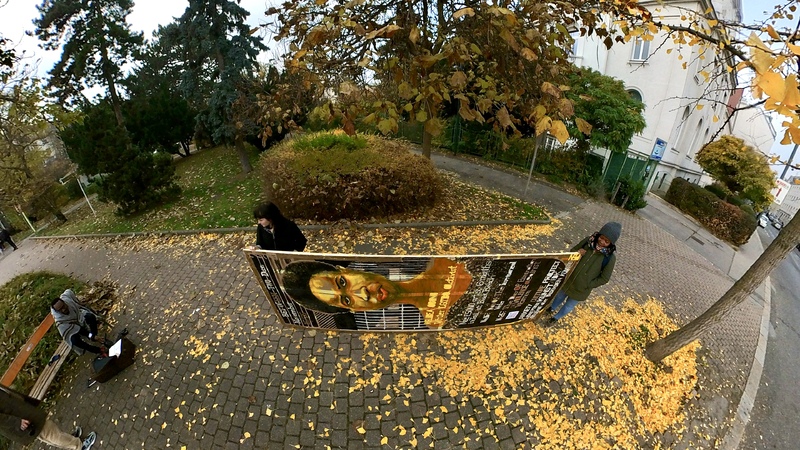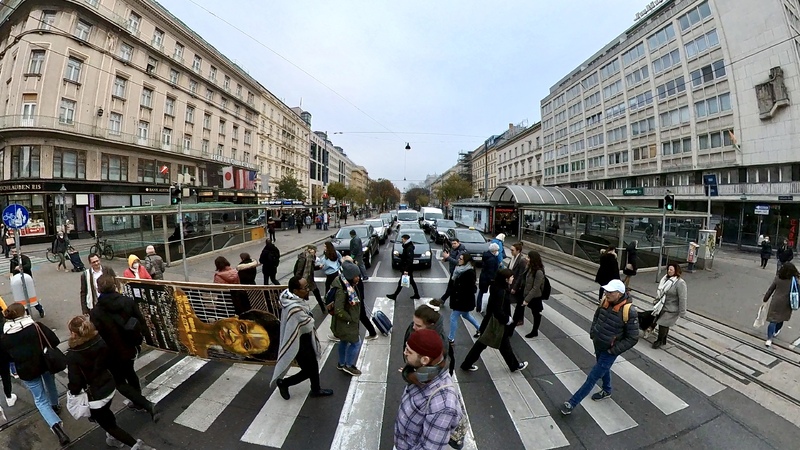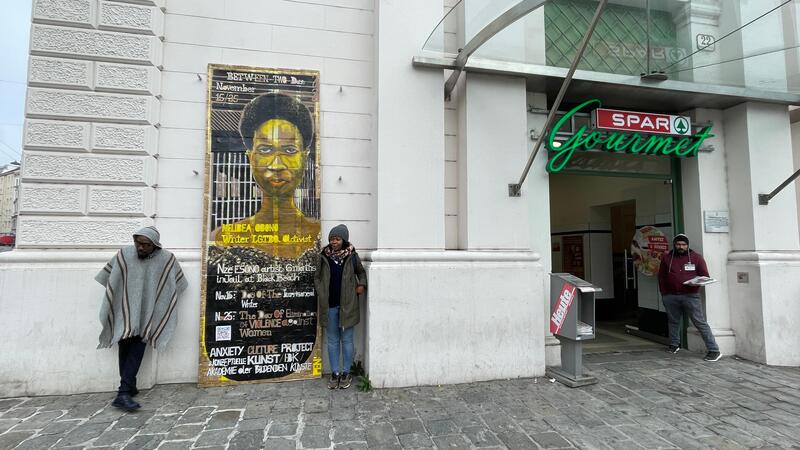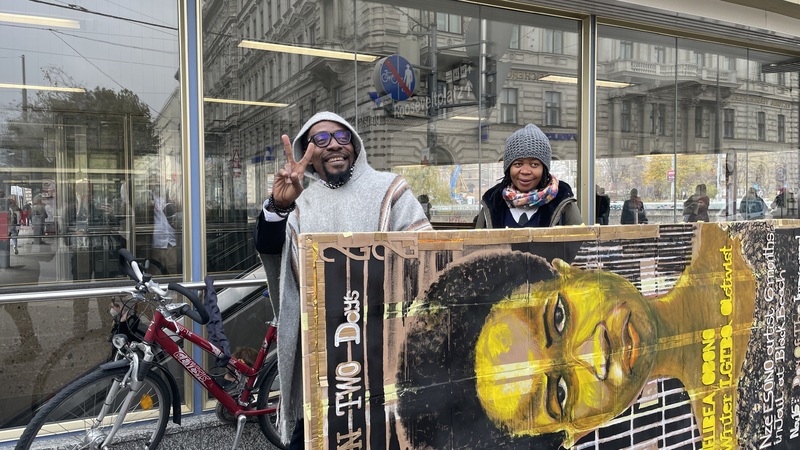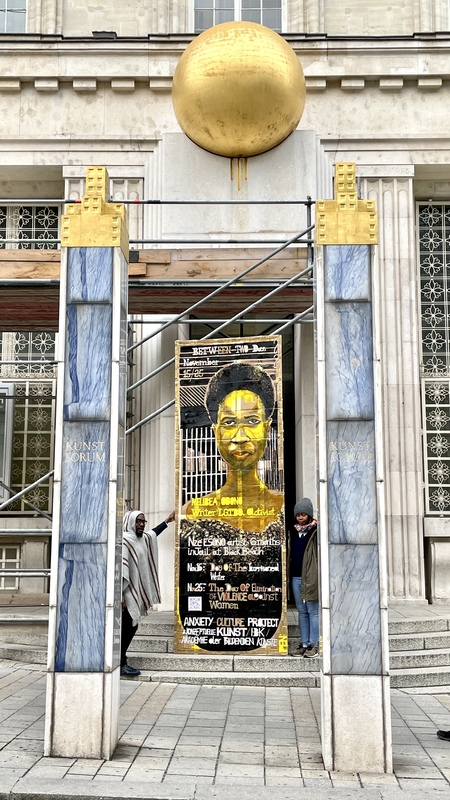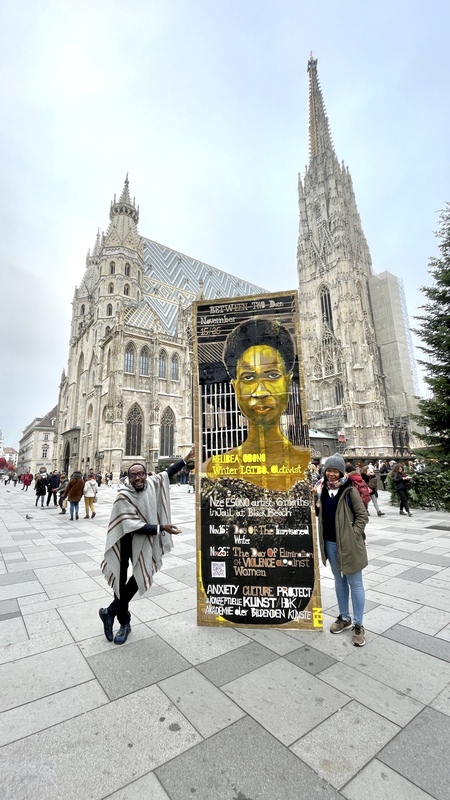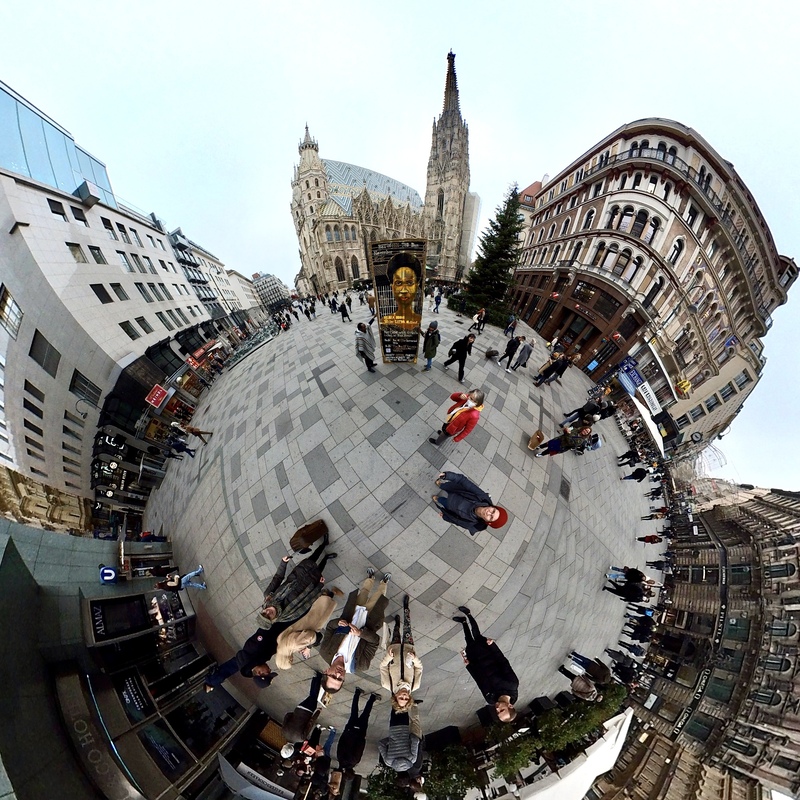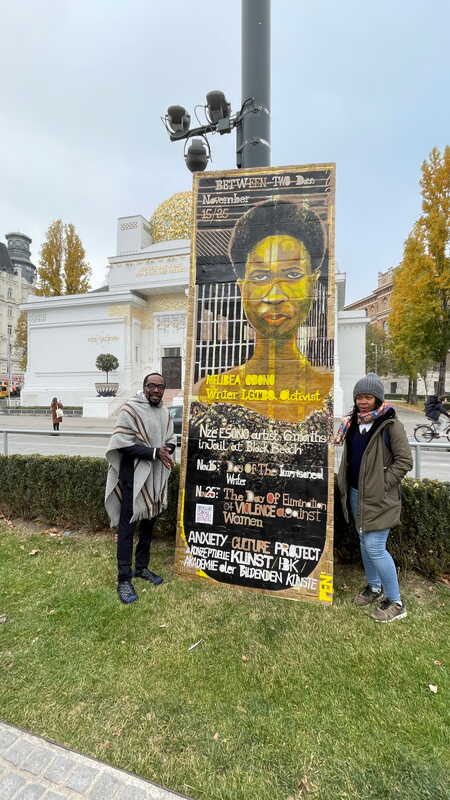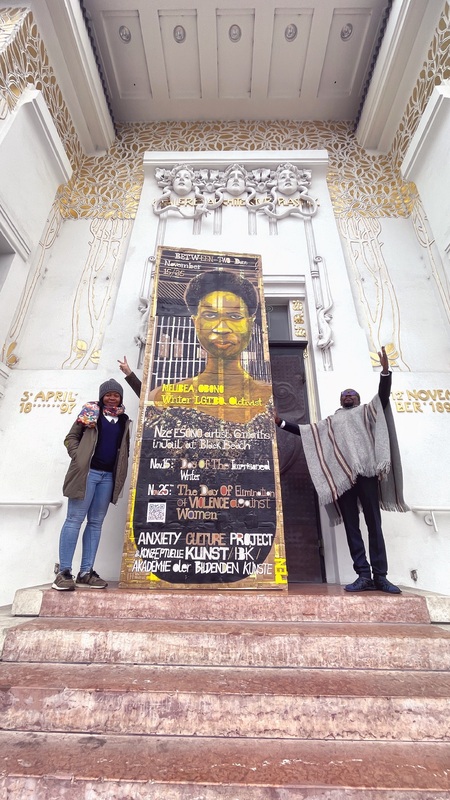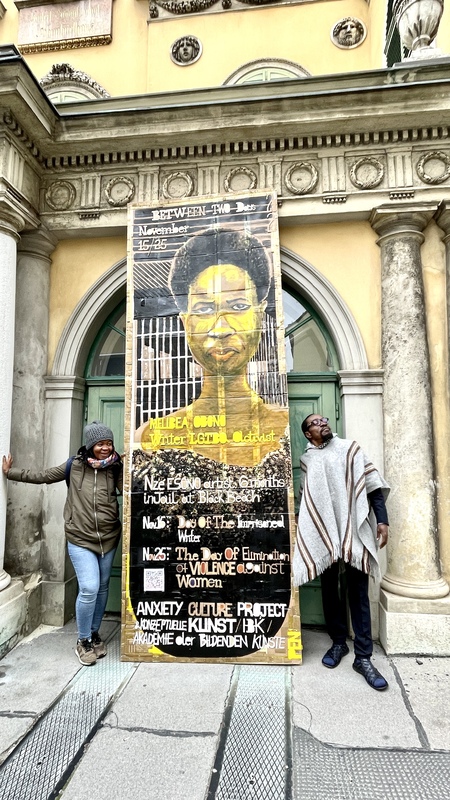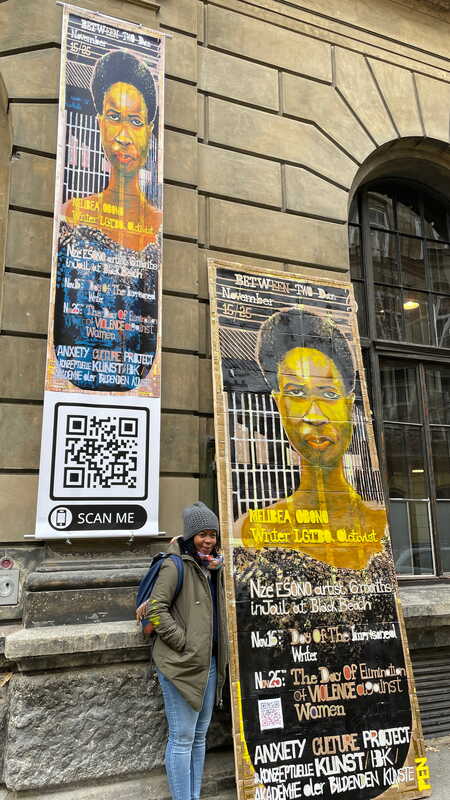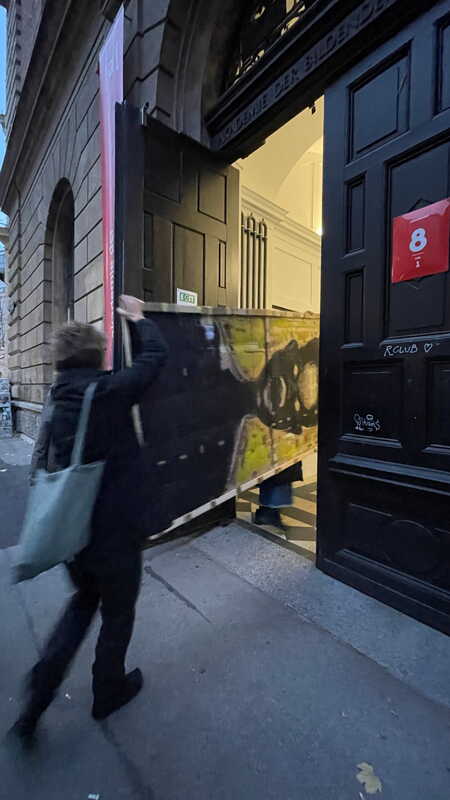Artistic and Literary Activism: Melibea Obono and Ramón Esono
Nov. 15th is the International Day of the Imprisoned Writer, and Nov. 25th the International Day of Elimination of Violence against Women.
In Fall 2021, Max Doppelbauer, Christian-Albrechts-Universität zu Kiel / Kiel University, Germany, member of the Anxiety Culture Project (Kiel / New York City) and Marina Gržinić, Department of Conceptual Art, Akademie der Bildenden Künste Wien / Academy of Fine Arts, Vienna, Austria organized the “Between Two Days” art residency and project featuring novelist Melibea Obono and comics artist Ramón Esono, both known for their human-rights activism in their home country Equatorial Guinea and for the courage of their actions under a dictatorial regime.
Trifonia Melibea Obono (1982-) is an Equatorial Guinean novelist and LGBTQI+ activist. She writes on women’s lives in her country from a postcolonial perspective, and addresses questions related to women’s and LGBTIQ+’s rights. Her published works in Spanish include Herencia de bindendee (2016), La Bastarda (2016), Yo no quería ser madre (2016), La albina del dinero (2017), and Las mujeres hablan mucho y mal (2019). Banned in Equatorial Guinea because its main protagonist is lesbian, La Bastarda is the first novel by a female Equatorial Guinean writer to be translated into English. Herencia de bindendee was translated into German. Obono is the recipient of the 2019 Global Literature in Libraries Initiative Award, 2019 Ideal Woman Award (Equatorial Guinea), and 2018 International Prize for African Literature.
Ramón Nse Esono Ebalé, a.k.a. Jamón y Queso (1977-), is an Equatorial Guinean illustrator and comics artist. An opponent to the dictatorial regime of Teodoro Obiang Nguema Mbasog, he was arbitrarily arrested in 2017 and spent six months in the notorious Black Beach prison. Various NGOs, including Human Rights Watch and EG Justice, campaigned for his release. In 2018, Esono was allowed to go into exile. Among others, he is the illustrator of La pesadilla de Obi (2014) and also drew for Viajes dibujados (2018). His work has been exhibited at the 2019 venue of the “Africa imprescindible” art show in Spain; the University of South Florida, United States (SubRosa: The Language of Resistance, 2013); the University of Alicante, Spain (Convergencias y divergencias: jefe, dele una oportunidad a su cerebro, 2010); the Spanish Cultural Centre of San Salvador (Democraturas, 2010); and the Spanish Cultural Centres of Malabo and Bata, Equatorial Guinea (Un Opositor en la finca, 2010). He has contributed to the films Un día vi 10.000 elefantes (2015) and Anomalías eléctricas (2010). He is the recipient of the 2019 Couilles au cul Prize at the Festival Off de la Bande dessinée d’Angoulême for his activism against censorship, the 2018 Veu Lliure Prize (PEN, Catalan section), and the 2017 Courage in Editorial Cartooning Award (Cartoonists Rights Network International).
During their “Between Two Days” residency, Esono created a larger-than-life portrait of Obono and added text on a framed poster, which they carried through Vienna, Austria on 15 November 2021 from the house where they stayed in the suburbs to the Academy of Fine Arts in the downtown area. They were accompanied by photographer Astrid Young. The walk is about seven kilometres long. The gallery of annotated photographs displayed here documents their peregrination through urban space as well as various stops the walkers made, several of which in front of well-known city landmarks. The social engagement of Esono and Obono; the language written on the poster; the action (a long walk with different stations); the bright presence of two censored individuals in front of world-known institutions (art collections, universities, religious buildings, etc.), standing at their doors, but not getting inside, except at the last stop; and street scenes showing both the opulence and the poverty encountered in cities invite viewers to react in different ways to a multilayered sociocultural background.
This project received support from Christian-Albrechts-Universität zu Kiel / Kiel University, Germany; the Anxiety Culture Research Project (Kiel / New York City); the Akademie der Bildenden Künste / Academy of Fine Arts, Vienna; Universität Wien / University of Vienna; PEN Austria; Stadt Wien Büchereien / Libraries of the City of Vienna; and EmBIPoc / Empowerment of Black, Indigenous and People of Colour, Kiel.
Photo credit: Astrid Young
All materials on this website are copyrighted.
Curator: Catherine Parayre

